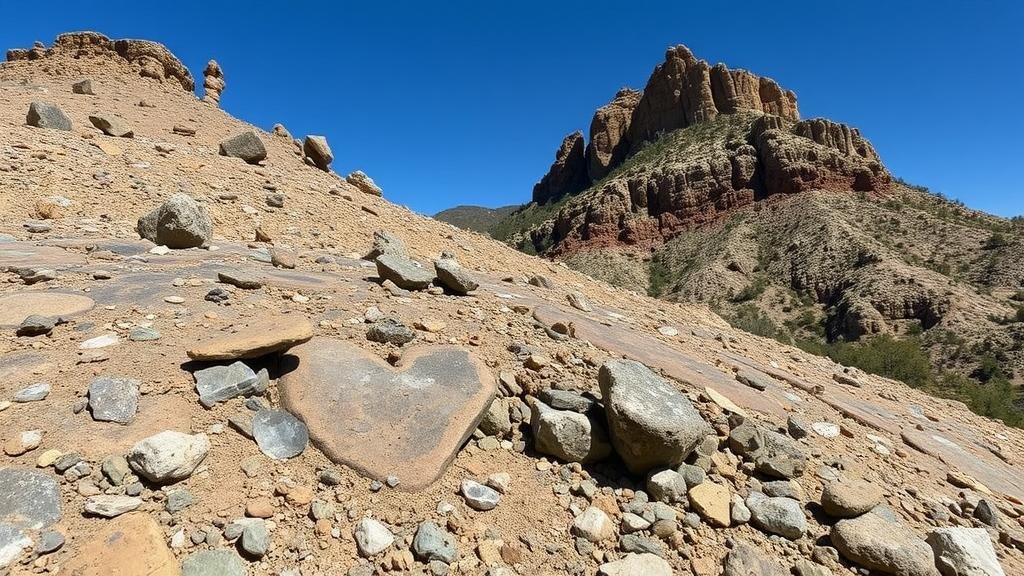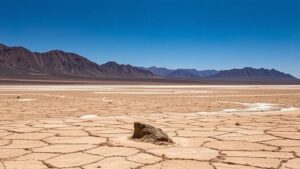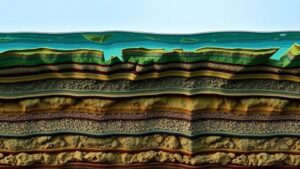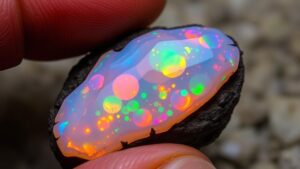Exploring ancient calderas in the Gila Wilderness for rhyolite with embedded crystals of feldspar and quartz.
Exploring Ancient Calderas in the Gila Wilderness for Rhyolite with Embedded Crystals of Feldspar and Quartz
For rockhounds and mineral collectors, the Gila Wilderness in southwestern New Mexico offers a treasure trove of geological wonders. Among these, ancient calderas stand out as particularly fascinating sites for those seeking rhyolite rich in embedded crystals of feldspar and quartz. This article delves into the formation of these calderas, their geological significance, and practical tips for collecting in this unique environment.
The Formation of Calderas
Calderas are large volcanic craters formed by the collapse of land following the emptying of a magma chamber. This can occur after a volcanic eruption or through gradual volcanic activity over time. The Gila Wilderness is home to some of the oldest calderas, which date back millions of years, offering a rich geological history to those interested in rockhounding.
For example, the Gila Wilderness contains the Gila Caldera, formed approximately 1.2 million years ago. The collapse resulted in a roughly 5-mile-wide depression surrounded by layers of volcanic rock, including ignimbrites and rhyolites.
Rhyolite and Its Unique Features
Rhyolite is an igneous rock that is high in silica, often characterized by its light color and fine-grained texture. It forms from the rapid cooling of lava or magma. One of the most exciting aspects of rhyolite found within the Gila Calderas is the presence of embedded crystals of feldspar and quartz. These minerals add depth and beauty to your collection, often appearing in stunning forms.
Feldspar, the most abundant mineral in the Earths crust, can typically be found in various shades, ranging from white to pink or even peach. Quartz, known for its hardness and clarity, often takes the form of well-formed crystal structures. Together, these crystals can create striking visual contrasts in the rhyolite matrix.
When exploring the Gila Wilderness for rhyolite with embedded crystals, it is essential to follow responsible collecting practices to ensure the preservation of this unique environment. Here are some vital tips for collectors:
- Research potential sites: Focus on the areas near existing caldera formations, particularly the Gila Caldera and its outlying deposits.
- Seek permission: Always ensure that the land you are collecting on is accessible, and check for any permits or regulations that may apply.
- Use the right tools: A sturdy rock hammer, chisel, safety goggles, and a collection bag are essential for retrieving specimens safely.
- Leave no trace: Collect only what you will use, and adhere to ethical collecting guidelines to maintain the integrity of the location.
Real-World Applications and Importance
The exploration of ancient calderas, particularly in areas rich in rhyolite, serves not only the interests of collectors but also advances our understanding of volcanic activity and geological processes. Rhyolite is often used in studies pertaining to:
- Volcanology: Understanding eruption history and potential hazards.
- Paleoenvironmental reconstructions: Analyzing the climate and ecosystem during the formation of specific deposits.
Conclusion and Takeaways
Exploring ancient calderas in the Gila Wilderness provides a remarkable opportunity for rockhounds and mineral collectors to engage with the Earths geological history. Rhyolite with embedded crystals of feldspar and quartz offers aesthetic beauty and scientific value, fostering an appreciation for our planets intricate processes.
As you embark on your rockhounding adventure, remember to follow responsible collecting practices and foster a connection to the natural environment. With the right preparation and respect for the landscape, your exploration may yield magnificent specimens and deepen your understanding of geology.



